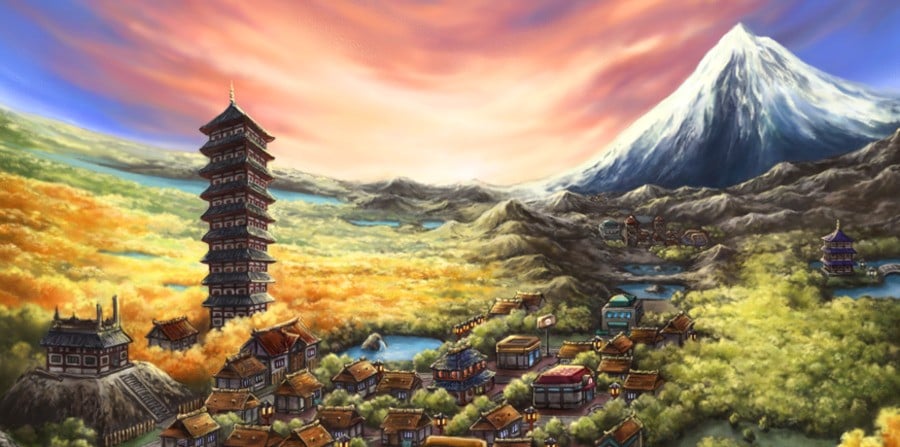
My first Pokémon was a Chikorita named Chicky, and I loved that tiny green horse-thing with all my heart. I came to Pokémon a little later than many of my friends and peers, having missed out on Pokémon Red and Blue by not owning a Game Boy, but I spent many hours watching others wander around Lavender Town's creepy little graveyard, or showing off Pikachu's smiling face in Pokémon Yellow.
I knew I wanted to be a part of this craze, so by the time I finally got my hands on a Game Boy Color, I made sure to tell my parents to get me Pokémon Gold. My little brother got Pokémon Silver, and we shared ownership of a Link Cable. It was a magical time.

Back then, I didn't know much about type advantages - and I didn't really care, either. Pokémon, to most kids, is a game where you get a pet and make it fight other people's pets, and although a rudimentary understanding of the basic rock-paper-scissors triangle of "Fire beats Grass, Water beats Fire, Grass beats Water" will get you pretty far, it gets a bit more complex when you try to come up with reasonings for Bug Type beating Psychic Type, or Fighting Type beating Normal Type. It's best to just ignore all those things, and make sure to have a lot of moves that hit hard.
My dear Chicky was quickly joined by a host of other Pokémon that I mostly kept because they were cute. The Togepi that you get gifted early in the game was one of my favourites, named "Eggy" because children are terrible at coming up with creative names. He had Metronome, a move that randomly pulled from every available move, and although Metronome is not a good tactical Pokémon move, it made my battles unexpected and surprising each time.
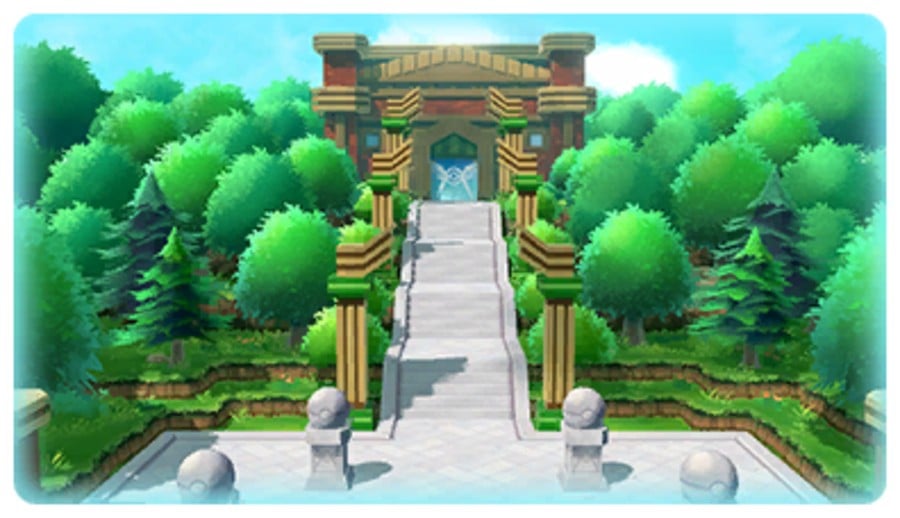
I had a Mareep too, named - points for guessing correctly - "Sheepy", and a Golduck, "Ducky", in an attempt to stuff my party with a little more power. My favourite of them all was - and still is - Swinub, the sort of pig-slime that, let's be real, I probably named "Piggy". I was incredibly disappointed when he turned into a big ugly Piloswine, but at least that meant we could be slightly fiercer in battle.
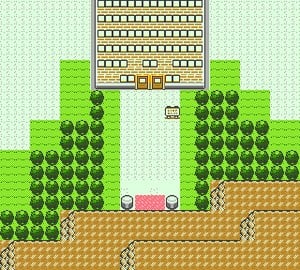
By the time I reached the seemingly endless maze of tunnels that formed the Victory Road towards the final step of the Pokémon League, I had a level 70 Meganium (Chicky), plus the Ho-Oh I'd just caught, and my brother's Lugia which I made him trade me because I'm a terrible sister. My first time tackling the Elite Four - well, it probably won't surprise you to hear that my team, made of Pokémon chosen for their cuteness, did not get very far.
Back to Victory Road to punch some Onixes, and a few hours later - still no joy. I spent all my money on Revives and Hyper Potions, but I barely had time to use them in between the Elite Four's elite, one-hit-kill moves. It wasn't looking great for my team - we were getting wiped out, over and over again, and I couldn't help but imagine each one of the Elite Four seeing this idiot kid enter their room over and over again and feel a bit sorry for me. But I wasn't about to give up. This was an era before "play something else" was an option. This was my game, and I was going to beat it, even if it took forever.
Time to get serious, then. Cue montage music.
Back then, the only way to find out information on a game was to beg my parents for half an hour on the internet, and because we were using the dial-up modem that used the phone lines, it took a lot of convincing. It was pricey, and it meant we couldn't receive or make phone calls, so it was inconvenient, too. In that half an hour, I would try to find all the information I could on Ask Jeeves, the pre-Google search engine designed around a butler, and print it off in huge sheaves of paper (also expensive, also inconvenient).
Armed with my newfound knowledge, a ton of supplies, and my brother's level 70 Feraligatr (for which I traded him a Magikarp - sorry), I was finally ready to run up those steps like Rocky.
Finally, painfully, I made it past Champion Lance, only to be greeted by Professor Oak. Hey! I know that guy from TV! The Pokémon anime was super popular at the time, so the thrill of being greeted by a genuine celebrity in the Hall of Fame was almost more exciting than actually making it there. It's a shame screenshots didn't exist back then, because I wish I had evidence of my dear, sweet Chicky being celebrated as a Champion.
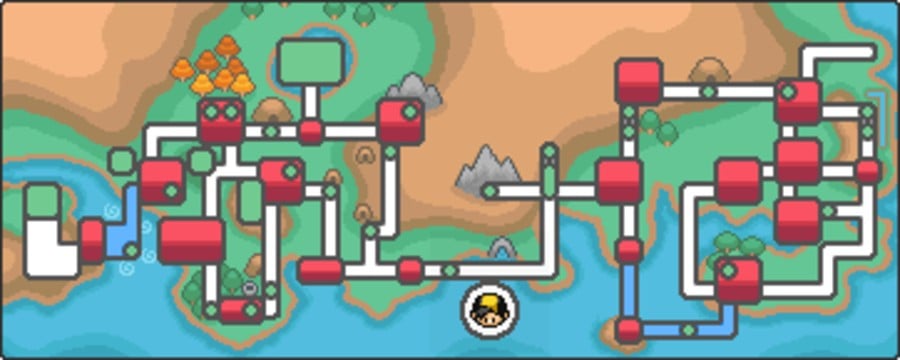
But that wasn't the last surprise that Pokémon Gold had for me. The incredible thing about playing games before the internet took over all our lives is that we had no idea what was in store. Spoilers were a rarity, and most were communicated through untrue playground rumours, like being able to obtain the Triforce in Ocarina of Time, or that there's a mysterious pyramid in the Gerudo Desert. So, when Pokémon Gold ended, only to reveal... an entire new world to explore, it was one of the greatest moments of my young life.
I had missed out on Pokémon Red and Blue, but Kanto had just opened up to me like a blooming flower, letting me experience a scaled-down version of the original game, gym badges and all.
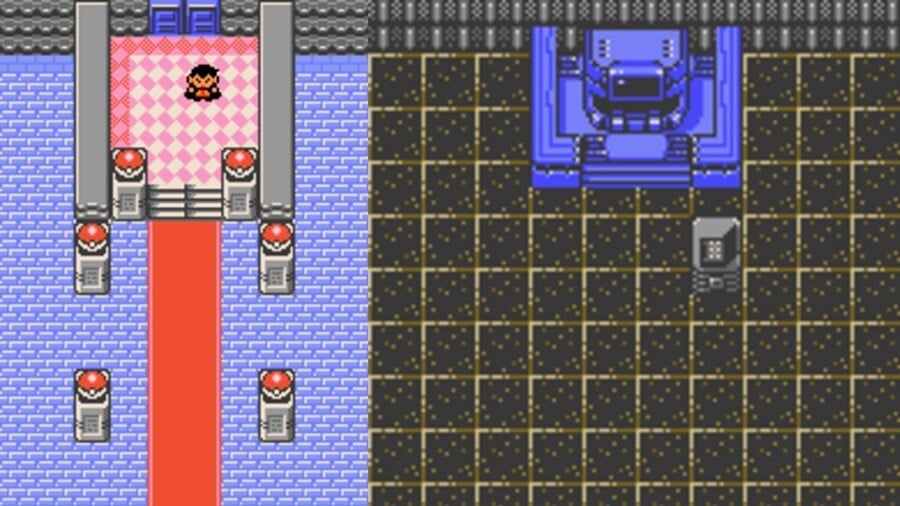
The amazing post-game secret of a whole second world, I would later find out, was thanks to Satoru Iwata, the former President of Nintendo whose legacy has impacted my life in more ways than I can ever know. His unexpected death came just a few short months after the closure of Official Nintendo Magazine - my first job in games journalism - and the world seemed worse off for it. He was a creative visionary and genius programmer whose efforts in teaching Game Freak how to compress Pokémon Gold and Silver left enough room on the cartridge for Kanto, an addition that basically saved the Pokémon series.
There are few people in this world that I mourn the loss of, despite never knowing them. Steve Irwin is one of them. Satoru Iwata is another. I miss his irreverent Nintendo Direct appearances, and finding out that he was often the person behind some of Nintendo's best business decisions. Iwata didn't work for Game Freak, or even Nintendo, when he helped out on Pokémon Gold and Silver - he was at HAL Laboratory, working on Kirby and Earthbound - but it's because of him that the games came to the West, and Kanto was added to the map, both figuratively and literally.

I began Pokémon Gold as a kid who just wanted to get in on a video game craze, but I ended it a Pokémon fan for life. I could never have predicted that the game would give me so much beyond what I expected, nor that it would still be sending ripples throughout my life. I wasn't even expecting to finish this piece with a tribute to Iwata, but almost six years on from his loss, his story lives on in my fond memories of his work.
I often reminisce about my time with Chicky, the plant horse. No Pokémon game since has quite managed to replicate the feeling of bonding with my very first Starter. I've since gone on to beat almost every Elite Four, Pokémon League, and Champion, usually with a similar party made up of my Starter, the first bird Pokémon I caught, the game's Legendary, and a selection of strong-ish backups. But that amazing feeling of discovering that the world was twice as large as you realised... that's a once-in-a-lifetime feeling. Pokémon Gold was the start of my journey through the world of Pokémon, but it let me experience what I'd missed, too. What a fantastic game.





Comments 49
I played Pokemon games casually as i started to play Pokemon games on 2013 from Pokemon X.
I didn't grow up by Pokemon games before Pokemon X/Y so at that time i was curious by looking at some kids playing Pokemon games on 3DS.
For starter Pokemons, i always choose Water type as i like Blue color associated.
Recently i got motivated by Yokai Watch games after i bought Yokai Watch 1 3DS.
Yes, they are different from Pokemon but Yokai Watch have something special in my opinion.
Nice piece. Really nice touch. I hope that Pokemon Arceus starts out as a prequel then...bam you're back in the Pokemon Future living with the decisions you made a thousand years ago in the past. Would be amazing! I loved playing through Silver and remember pulling moves to try and clone items only to accidentally erase my game 😅 absolutely loved playing it over again anyway, easily some of the best Pokemon games of all time
Your poor brother
Tyranitar remains my favorite Pokémon to this day. Partially because of how hard it was just to level him up. And once he finally evolved, he instantly became OP. Almost as satisfying as getting Gyarados for the first time.
This is why I love the remakes, they allow you an opportunity to relive missed opportunities. I was too young to experience Blue and Red but I was at my Pokemon peak around aged 10 during Fire Red and Leaf Green (and that's why Leaf Green is my all time favourite). My brother also had Fire Red but wasn't as invested as me but I was able to use his GameBoy and game to get my hands on Arcanine and Scyther! I also loved Ruby and Sapphire but by the time Diamond and Pearl was released I thought I was a cool teenager too cool for Pokemon but now as an adult I will get to overcome my naivety and experience Sinnoh for the first time, Chibi or not I can't wait!
My starter for Gen 2 was my fav. Typhlosion just looks like a boss. I always name my starter Guy in every generation. It's tradition now.
Then I discovered Xatu and smeargle and those became my favs too. So many fan designs in that game.
Lovely article. Your story mirrors my own start with Pokémon - experiencing the first generation through the anime, the TCG and friends' games before finally beginning my own adventure with Pokémon Gold. I went for Totodile and on my very first play-through, did not use any other Pokémon for battling. This worked out fine until I reached Elite Four Karen's Vileplume. A fair bit of grinding later and I prevailed through sheer brute force (it never occurred to me at age 8 to train other party members or even teach Feraligatr an Ice-type TM move). Yet the big surprise was still in store - going to Kanto, a region I knew about from other Pokémon media but had never explored myself. Mind blown. This article allowed me to relive those happy memories of a more innocent time - thank you!
When I was a kid playing Pokémon I used to name them all as my friends, strange knowing how I'm still mates with all 6 of them. My 10 year old brain must of known true loyalty
@NotoriousWhiz How did you manage to catch Larvitar? I tried so hard to but could never get him no matter how many ultra balls I tried
I was too young to have my own GameBoy in the late 90’s but I used to watch my brothers play Red and Blue all the time and eventually Gold and Silver. My mom finally got me a GameBoy Color later and my brothers were nice enough to let me restart and play through their copies of Yellow and Crystal. Awesome memories.
Once I got my GBA, I purchased my first Pokémon game that was officially mine: Ruby. Loved that game to bits. Eventually got Leaf Green and Pinball. Unfortunately, once I got to like 5th grade or so, everyone was saying whoever played Pokémon was a stupid loser and needed to grow up. So I did the unthinkable... I traded in all of my Pokémon games.
Since that moment, I fell off the Pokémon bandwagon. I skipped Diamond/Pearl and HeartGold/SoulSilver completely. I eventually transferred from private to public school and made friends with a couple kids who were looking forward to the new games, Black and White. I went up to my oldest brother and told him about the games. We looked them up and thought they looked awesome. It was at that moment we realized age didn’t matter and we got back into the Pokémon craze.
To prep ourselves, we bought used copies of the fourth gen titles. I got Pearl and HeartGold myself. I eventually bought used copies of Yellow, Crystal, Gold, and Emerald.
The rest is pretty self explanatory and I still love Pokémon despite some issues I have with a few of the newer titles. I’m super hyped for the Shining Pearl and Legends!
man this got me all nostalgic. i managed to get a US copy waaay before it came out over here in the UK. was super poor growing up so we didn't have a computer and there was almost no info in magazines at the time so it truly was magical stepping in completely unspoiled.
rip SPYRO the fraligator, god damn those gameboy batteries
Johto really was something special. I was never tempted to buy Let’s Go Eevee/Pikachu, but I’d absolutely buy a Let’s Go Togepi.
@dannym2091 No clue, been too long. If I had to guess, just a status effect (probably sleep) + ultra balls until he stayed put.
Wait, you guys don't release them?
My very first starter in Blue was Charmander. I had never played RPG’s before that, so I wasn’t necessarily acquainted with level grinding before Pokémon so I could never get past Misty- even after I evolved him into Charmeleon. It was honestly pretty aggravating to the point I almost didn’t want to keep playing. However, my younger brother started a new game, and ended up destroying my pre-existing save file (he was only in kindergarten at that point) so I restarted anyways. I eventually read the manual again, and chose Bulbasaur because the manual said that he could take down the first 3 gyms the easiest. Once I started to understand the gameplay mechanics more, I stuck it through to the end with Bulbasaur, and I finally defeated the Elite 4 and my rival.
I’m actually playing Gold right now! Unlike you, I had Red and Yellow. Then skipped Gold/Silver, and all in between, up until I fell back into Pokémon with Alpha Sapphire.
I’m enjoying Gold so much right now! I’m even playing it on an original Gameboy.
First game I played was Yellow. While Pikachu is your starter and you get all the other starters, I chose Pidgey as my Pokemon. I beat every gym with Pidgey, I solo'd the Elite for with Pidgeot, and by the time I was done playing, my Pidgeot was level 95. I forsook all other Pokemon for Pidgey, and the only thing I regret is that I lent the game to someone to do what I now know is the Missingno glitch, and after getting the school involved to have them give me my game back, they erased my save data. Such a tragic end to Pidgeot the Unbreakable. Fast forward to Pokemon Silver, I then knew about Pokemon types and basic strategies. And I was immediately enthralled by the fact that Pidgey, once again, was a Pokemon I could play the whole game with. This time however I knew the value of a Pokemon team and when to use each Pokemon for full effect. I started with Cyndaquil and Pidgey, and by the end of the game I had a full team that had different types and functions. Then I beat the game and for the first time ever, which I will wager is what most kids then felt, I experienced nostalgia. The place I had been, making Pidgeot a monster birb, I was back there. And it was entirely thanks to one man, one man whom I can never thank, least not enough. So thank you Iwata, for letting me experience nostalgia for the first time, and thank you for doing what you did for Nintendo and the gaming community as a whole. Pokemon Silver/Gold/Crystal and Soul Silver/Heart Gold are my favorite games bar none, and are as close to perfect games as we can get, especially when looking at them from a sequel's standpoint.
I remember when I was heading up to the elite four in ultra sun. My incineroar (which 10 year old me named Hot Head) got out of it's pokeball and we walked to the doorstep of the elite four. Good times
This is an amazing piece! The stories that can come from games like pokemon are fantastic! I fondly remember catching all the legendaries in pokemon diamond for the first time, it was magical! I had no such moments in SWSH however. And looking back on it, Sun was pretty bad too. I probably shouldn't be allowed to comment on pokemon articles, huh.
Such a nice retrospective!
I was a college grad living in Japan when the Pokemon wave really hit. Snobby me back then stuck to my ‘grown-up” games on the PS and Saturn.
20+ years later I did enjoy playing through Let’s Go Pikachuu with my young daughters, though, so I can imagine how hooked I would’ve been if I was born later!
I wholeheartedly second Kate’s high praise for Iiwata-san, who really was like the genius heart and soul of Nintendo when he was taken too soon. He always seemed to have a twinkle in his eye and exude an enthusiasm and love for his job. May his legacy at Nintendo never fade.
Currently replaying Gold on my 2DS. It has been almost 20 years since I finished Silver but everything feels so familiar still. Loved this gen, but I also loved the change in art direction they made with Ruby/Saphire.
This mirrors a lot of my early experiences with Pokemon; the first wave hit when I was in second grade. Like most kids at the time, I watched the anime and collected/traded cards, but I didn't have a Game Boy. I received a Silver Pikachu Edition GBC for my 10th birthday with Pokemon Gold! The Gen 1 games were still in circulation at the time, so I eventually also got Blue and the other two Gen 2 games. I got Yellow years later from a cousin who no longer cared for the franchise.
I was also new to RPGs and only used my starter and didn't really train anything else during my first run lol. Typhlosion is still one of my favorite starters, but that thing doesn't stand up to Clair's Kingdra very well. XD And trust me, there's also something to the Whitney's Miltank meme.
I've stuck with the series since, though I'm behind enough on games that I haven't worked my way around to the Switch titles yet and only just finished Ultra Sun in late 2019.
@YoungLink64 I didn't even intend to write about Iwata, but thinking about Pokémon got me all in my feelings. <3
Great article! I remember when I was young, I had to sneak to play my brothers Pokémon red. I couldn’t save the data because I would ruin his game so I only got to play up until misty most of the time.
I miss the classics. Newer Pokémon games lost their touch
Very adorable and wholesome read. Thanks for sharing this! An F in the chat for your brother though lmao.
My first Pokémon game was Platinum and I still have my starter with me in Home, a Chimchar my brother named Blaze. Super excited for the remakes to come out so I can live my childhood again.
@Kilamanjaro Really doubt that a game like that could ever work honestly.
It was nice to read this story .... I realy enjoyed the time travel to a simpler era when getting information from the internet was not an option ,wich made the gameplay way more chalenging but pure... I am from Greece and the pokemon games didn't became famous here as fast as the rest of the Europe or America... but its because of them that i learned my first English words and made my first Friends....Cheers to Pokemon may acompany us for many years to come !!
While Gold and Silver were amazing at the time, Gen 3 & 4 is where it’s at. Unless of course you got Heart Gold & Soul Silver.
@Kalmaro I always name my starter Buddy. Just because I thought it was funny when I was 12 XD
@Leuke Yeah, I wasn't very inspired as a kid so "Guy" was the best I could do.
Now it's kinda stuck.
I remember playing Red when it released. I was about 11 or 12 years old. Charmander really did feel like my partner. Like there was real growth over the course of the game. Kinda miss that in the newer game BUT it could just be my adult brain compared to the mind of a child.
I only started Pokemon as an adult lifetime gamer and started with UltraSun (600 hours!)...
I am 4 games in now, with X being the latest for me (loving this gem!) and played FireRed, Platinum as well.
I always stick with starter through the whole game and only swap them out occasionally for some grinding sessions.
I too started my pokemon journey with a Chikorita, though mine was named Leaf.
I also had a little brother, but unluckily enough my parents did not see the need for each of us to have our own gameboy, so my brother and I shared our pokemon journey. This was at times of course frustrating because parents don't understand when you have been struggling through a cave, the last thing you want is for your turn with the game boy to be over and your brother to immediately use an escape rope because he has no investment in that cave.
All in all though, I think it brought my brother and I closer together. Sharing a pokemon journey means you must share goals, triumphs, disappointments, as well as the newfound wonder that the opening of the Kanto map meant for you.
Huge thanks to my little brother for letting me choose our shared starter pokemon Chikorita (Leaf) and not forcing me into selecting the ugly alligator. No offense to Totodile, but his final stage leaves something to be desired.
Also, sorry I got so mad when you accidentally deleted our entire game, and I made you literally build the same team up again (Leaf and all) to replace what we lost.
@msvt That’s awesome you started playing them as an adult, I feel like most people who didn’t play them growing up write the series off as being too kiddish.
I’d highly recommend picking up one of the Johto games, they’re the best in the series in my opinion. HG/SS might be more up your ally since you started with the later games, but G/S/C are still fantastic and readily available on the 3DS eShop.
@Kilamanjaro Yep, I learned the hard way to not use your best pokemon as the ginny pig for cloning items.
Even if I had not seen who the author was, I could tell this was a Kate Gray piece. Lovely read again, Kate. Sweet and informative.
@DeathByLasagna amazing memories bro! im not that adicted to the franchise (played red back in 90s and returned only to Y and shield), but im happy to see you came back!! me too, im eager to play pearl and legends!!
After being utterly disappointed by Sword & Shield, I went back to Gold & Silver and was taken aback by how good those games still are. Pity the Pokemon Company seems to have lost its "heart".
Loved your recount of your pokemon experience!
Enjoyed reading this. I can totally relate.
I was crazy into the anime and one year for my birthday I asked my parents for a gameboy colour and pokemon Red. I used to chill in my parents room for a while at nights whilst my autistic brother got to sleep (we shared a room) and one night whilst my parents thought I was watching their tv, I found the present, yet to be wrapped up. Temptation overtook me and I opened both boxes so carefully, played for a few hours and then packaged it back up as good as new. I still remember my sister asking me how I had a Charmeleon on day one of having the game! Honestly, my most cherished childhood game.
You took your brother's Lugia?! LOOOOOL
@g_ruz
I got into it out of curiosity and I was becoming familiar with the 'mon's through smash and various puzzle games, etc.
I find these games to be the most ideal pick-up-and-play games ever -turn based, and player oriented progression is so fun for me. These games are rewarding on top of rewarding... always new little goals to go with the longer term.
I find these regions, the maps, the locations, and the music very relaxing and I love building my team and picking moves and having the world open up.
I blew it off for many years due to the kiddie misconception. Wish I had joined in years ago, though these games are so heavily enhanced through the portables I am not sure I could have joined in sooner. The New 3dsXl was a real game-changer for my game playing.
Cheers!
This was such a lovely read and totally was my experience too! I did have a Game Boy Color and played Pokemon Red and Yellow versions but I never owned Gold and Silver. I didn't actually end up playing Gold until HeartGold released on the Nintendo DS. And I too discovered that Kanto was included in the game, and then learning how Iwata was responsible for getting that on the original game as well. It was such a mind-blowing moment and just deepened my love for Iwata. I also agree that no Pokemon game really has captured my love for the series quite like the originals (HeartGold and SoulSilver included in that because they were BEAUTIFUL recreations). These early games had such soul in them that seems to be lacking in Sword and Shield. I actually prefer Let's Go Pikachu but that's again likely nostalgia and just another example of an original game being beautifully recreated. I have a lot of hope for Pokemon Arceus that it will recapture the mystery and magic that the early Pokemon games had!
@VoidofLight Mass Effect does this and a few RPGs do this like Fable, where you can make choices that influence the world and outcome later in the story. It's not so farfetched.
@Kilamanjaro But, I doubt that we'll go back to the modern day version of the region, since that'd be two open worlds they'd have to build. With many different changes depending on choices.
@VoidofLight yeah this relates to what Kate wrote about how nobody thought it would be possible with Gold / Silver. They did this with LoZ Ocarina of Time amongst other games. Just relating it to the article, it's definitely possible if you look at the massive game worlds that exist today
Great article! It ended up making me have my own "Memory Pak" while reading it.
My first Pokémon game was Blue, in the beginning of 2000, when I was about 10 years old. At first, I also only used my starter, until Wartortle was defeated in Erika's gym; that's when I started to take type matchups seriously.
Months later, when I played Yellow, I reached the Pokémon League with an underleveled team (lv. 37-41); not surprisingly, I couldn’t even pass Lorelei. I only won when a friend of mine gave several Rare Candies to my Weepinbell (my favorite Pokémon at the time) and Dragonite.
With Pokémon Silver (which I won on my 11th birthday, along with Pokémon Stadium 2 and a Transfer Pak) I still had difficulties, and there were many times that I asked friends for help to get through some parts of the game.
It was only at Stadium 2 that I improved as a player, thanks in part to Earl's Academy, which had those theoretical and practical tests. It also helped that I could bring my creatures trained in Silver. I felt great when I finally defeated Red at both games.
I remained a fan of the series even in high school, usually the time when Pokémon enthusiasts were most lonely in their appreciation of the franchise, stigmatized because they liked something so "childish". I continued to play through college and graduate school. By the way, my Christmas present when I passed the PhD selection was a 3DS with Pokémon X, lol.
@KateGray Fantastic article. You've quickly become my favourite writer here with your style and opinions that tend to mirror my own. This one solidified it as your story greatly aligns with my first Pokemon game experience, too - with Silver, and my older brother having Gold.
Always looking forward to reading your latest take.
Cheers
Tap here to load 49 comments
Leave A Comment
Hold on there, you need to login to post a comment...